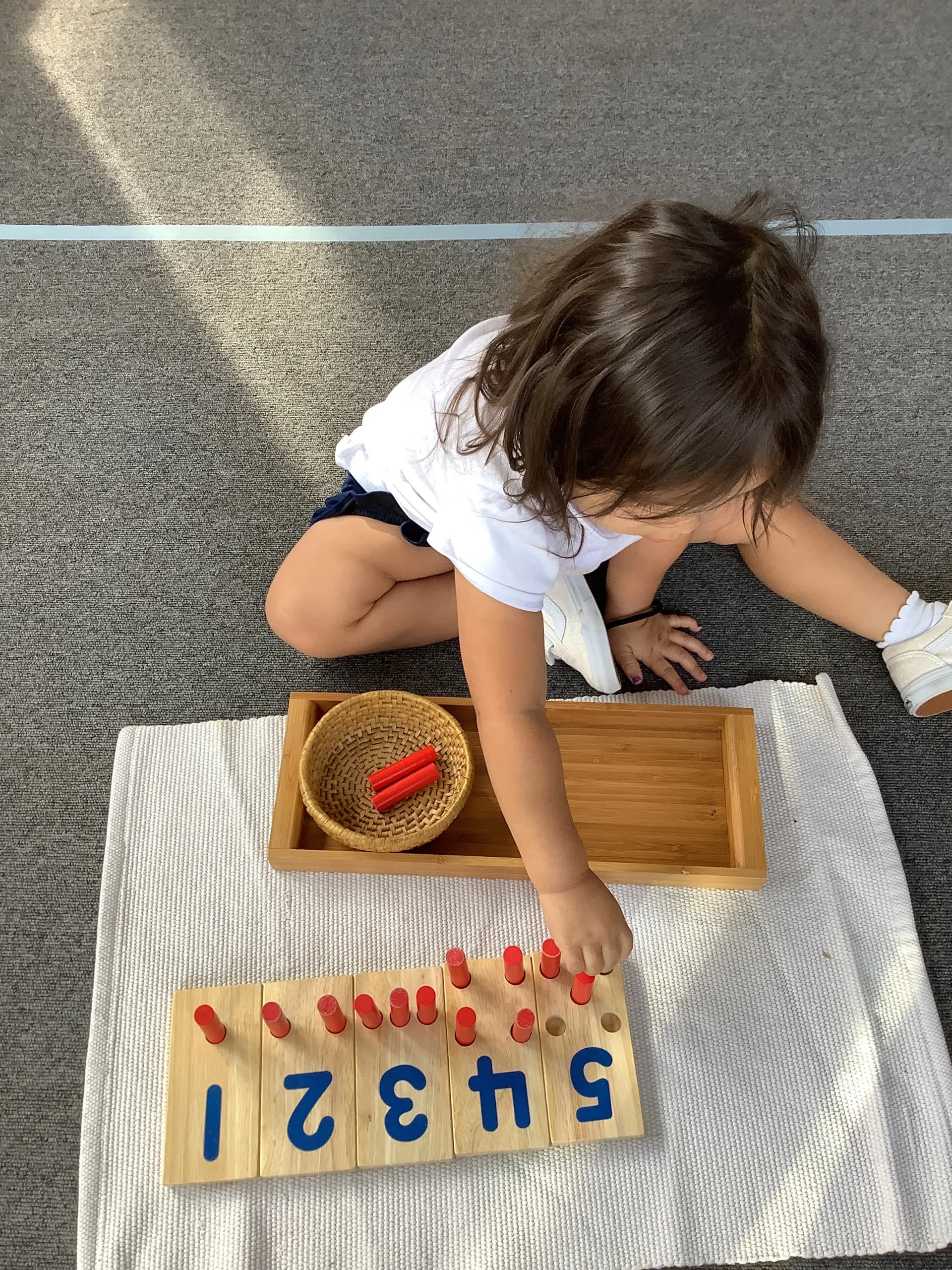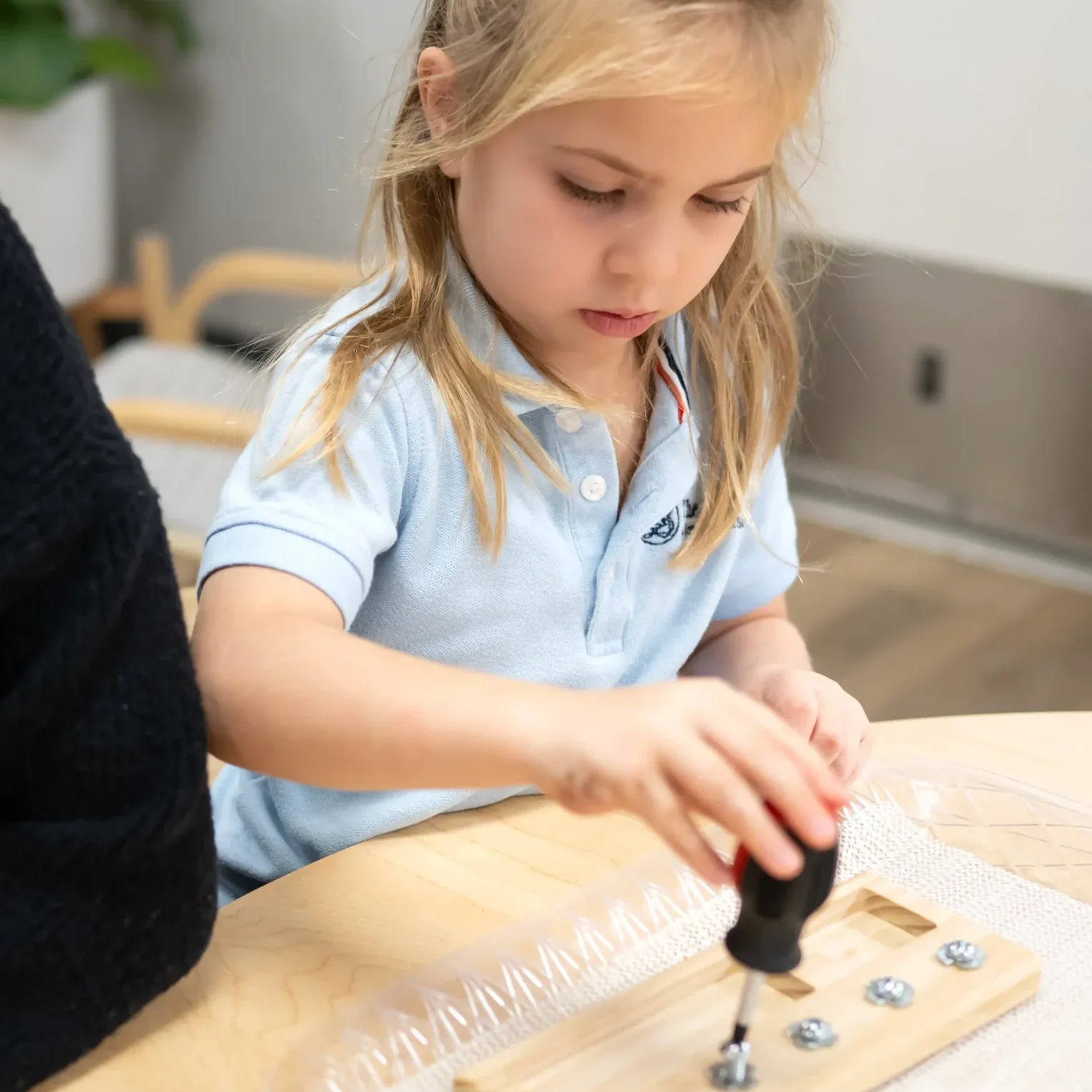Curriculum
TODDLER HOUSE CURRICULUM
This area focuses on the toddler's ability to care for themselves and to become aware of and care for the environment around them. Students will learn concentration and order to gain independence through repetitive and precise exercises. Examples include feeding themselves, dressing and undressing, toilet learning, hand washing, drinking from a cup, scooping, pouring, grace and courtesy, etc.
Our Toddler classroom encourages the movement Toddlers so desperately crave while helping children learn control of the body and develop spatial awareness, balance, and strength. Movement activities include yoga, dance, climbing apparatuses, and indoor and outdoor play.
Exposure to the elements of language is critical for this age group. Activities are designed to encourage expression, build vocabulary, strengthen word mapping skills, and promote linguistic understanding. Regular conversation is encouraged in addition to formal reading, singing, rhyming, etc.
Toddlers love nothing more than to explore, examine, and test. The sensorial materials encourage children to touch, watch, listen, taste, and smell while helping them discriminate, classify, assign vocabulary, and problem-solve.
Teachers will introduce basic mathematical and scientific concepts to prepare children to move up to the Children's House classroom. Toddlers will explore the concept of quantitative description as well as the basis of experimentation and prediction.
Toddlers explore the different celebrations and traditions of the cultures represented in their classroom. They begin to understand and become aware of the world outside of themselves. Art and music are significant components of the Toddler curriculum, with free expression and planned projects to foster creativity available daily.

CHILDREN'S HOUSE CURRICULUM

Practical Life activities are designed to help students learn to care for themselves, others, and their environment. Children develop concentration, motor skills, and a sense of community through tasks like pouring, dusting, and polishing. As they grow, they master essential life skills like sewing and shoe tying.
Sensorial materials help children refine their senses and classification skills. Through activities that engage smell, taste, touch, sight, and sound, they learn to differentiate concepts and develop spatial awareness, pattern recognition, and motor skills.
Children learn about 14,000 words by age six, making the Montessori language section essential. Children progress toward independent reading in the Children’s House through phonetic instruction and hands-on activities.
In the Children’s House, hands-on math activities give children a concrete understanding of quantity and operations. By Kindergarten, they often perform mental math, including carrying, borrowing, multiplication, division, and fractions. They also explore basic geometry and algebra concepts.
Curiosity drives learning, and Montessori science activities nurture this through hands-on exploration. In the Children’s House, students explore magnetism, buoyancy, color mixing, zoology, botany, astronomy, and chemistry. They practice prediction, experimentation, measurement, and reporting while learning classification and proper terminology.
Montessori education fosters global awareness by exploring diverse cultures, traditions, and beliefs. In the Children’s House, students study the world, starting with the globe and moving locally. Families share their cultural traditions, and students celebrate holidays with food, dance, and customs, promoting appreciation of diversity and unity.
Children’s House classrooms nurture creativity and self-expression through art, music, and movement. Activities like painting, molding, and coloring are always available, and traditional Montessori tasks often include creative elements. Students enjoy music through singing, dancing, and listening, while movement activities support balance, coordination, and body control.
